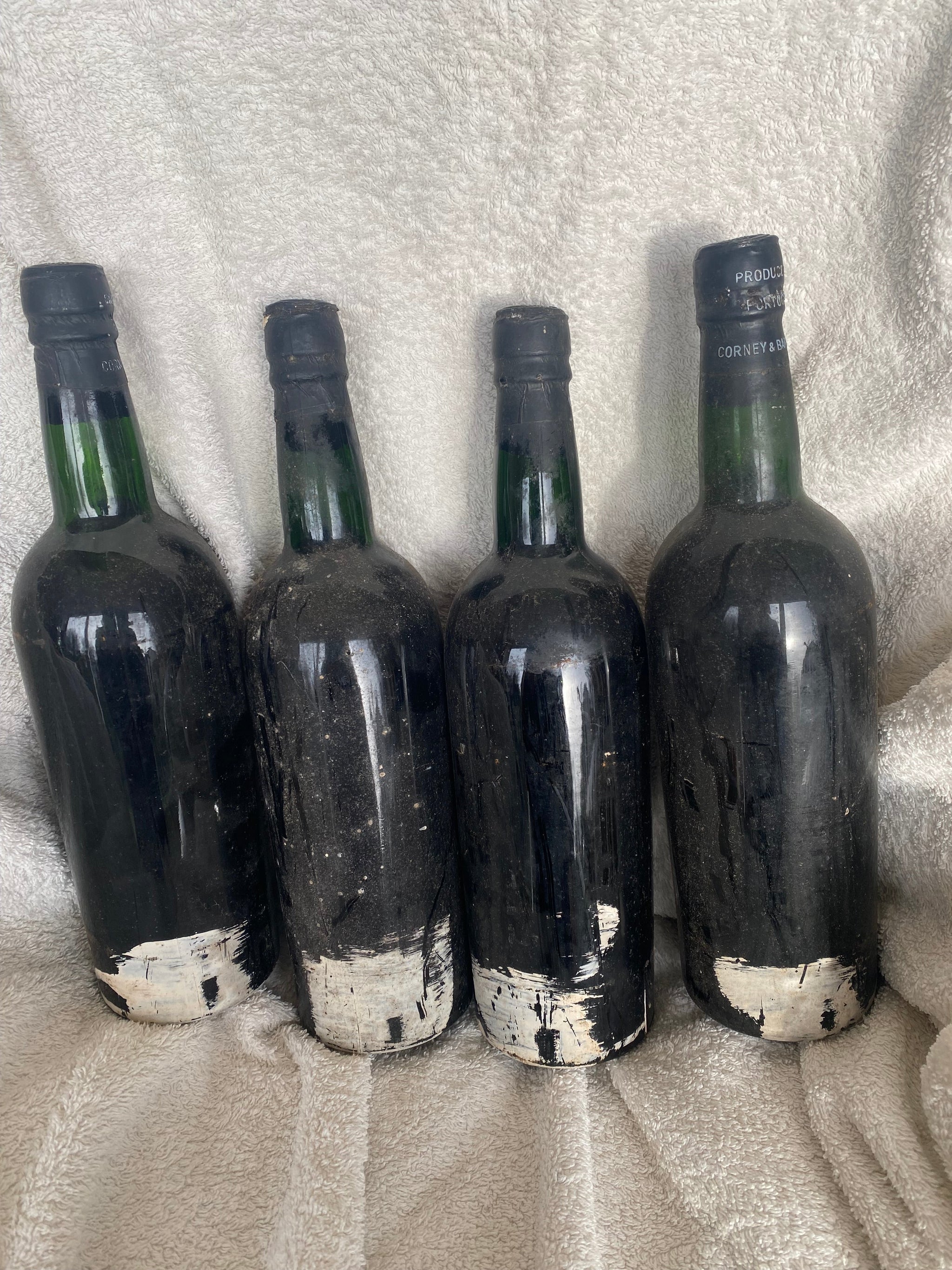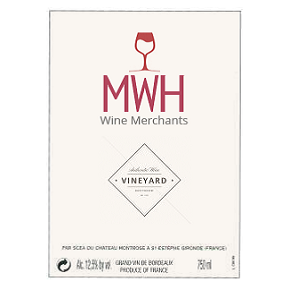Affordable Great Red Bordeaux (Why It Pays to see Vintages as Just a Number)
The wine trade is obsessed with vintages. The perceived collective quality of a year is a major determinant as to how much a wine will cost and how many (how few!) will get to enjoy it. Nowhere it seems is this neurosis more apparent than when it comes to vintage red Bordeaux. A word from a critic such as Robert Parker or Jancis Robinson and the trade either goes into a state of frenzied anticipation (think 2005, 2009, 2010 and 2015) or puts on a brave face for the en-primeur campaign and promptly forgets them once the wines are sold (think 1994, 1999, 2001, 2014).
It’s a strange condition that’s got a lot worse in recent years. As good and great Bordeaux vintages have become more frequent occurrences (I have heard no fewer than 7 described as ‘the vintage of the century’ since 2000) so anything that is not absolutely extraordinary is met with increasing indifference.
The result of this is a polarisation of prices for wines from the same property. Take Château Montrose, that great Saint-Estèphe . 2004 Montrose – a 92/100 Wine Spectator wine - will cost you around £80 a bottle. The 2005 Montrose – 96/100 The Wine Advocate – will set you back around 50% more at £120+. Both are terrific wines, boasting concentration, complexity and style. The differences between the two is mainly stylistic and while 2005 is more concentrated, rationally it does justify the price lift. The price jump for 2005 is down largely to the hype surrounding 2005 on release and its ability to linger in the minds of the trade as an exceptional year. Is 2005 50% better than 2004? No, of course it’s not.
Don’t Believe The (Lack Of) Hype
Now this odd trend does have one significant upside for lovers of fine red Bordeaux who aren’t billionaire collectors or investors. It’s that there is a large and increasing number of fantastic wines from good years that are remarkably well-priced. In this latest blog from MWH Wines – the home of affordable fine wine – we’ll highlight some true gems that offer wonderful drinking without leaving you with a painful financial hangover.
Château Latour 2007
Château Latour, in common with the rest of the First Growths, is not a wine that one normally associates with value. Since 1990 this legendary property hasn’t put a foot wrong. Even its second wine - which isn’t a second wine at all - Les Forts de Latour is regarded by many as being of Classed Growth quality. Know where to look, however, and you can still enjoy this extraordinary wine. Vintages like 1994, 1997 and, my own favourite, 2007, are superb wines that cost a fraction of the more feted incarnations such as 2009 or 2010.
I remember the 2007 en-primeur campaign well. It was a year of moderate success overall with wines that were soft and charming but complete and without serious faults. The trade’s attitude was one of mild concern. 2005 had been a great success and was becoming physical, 2006 had its moments and with the Euro crisis just getting into its stride, these were wines the trade wanted shot of. The result is that the best such as Latour are well-priced and are drinking at their peak now. This is another advantage of so-called ‘off vintages’, they often don’t need decades of ageing. The 2007 Latour is now more enjoyable to drink than the 1990, 1986 or the stubbornly tough (if potentially legdendary) 1982.
Château Gruaud Larose 2001
Château Gruaud Larose is always good value. Like its sibling, Château Talbot, even in great years like 2005 its competitive pricing makes it a firm favourite with claret lovers. Ironically, 2001 will be remembered as a forgotten year. Like 1971, 1988 and 2017, its proximity to a classic vintage has meant its massively overshadowed. Today, Gruaud ’01 represents excellent value for money. Fully mature, mellow and with those typical Burgundian ‘farmyard’ overtones, this is a real claret lovers’ wine and one that is well worth seeking out.
Château Grand Puy Lacoste 1988
In terms of sheer quantity consumed, Grand Puy Lacoste 1988 must rank in my top ten of all-time red Bordeaux. Released on the back of the moderate ‘87s and the wonderful but austere 1986s, it was acclaimed on release only to be overshadowed by the 1989s and 1990s. This meant that by the time they became physical in 1990, they were cheap and plentiful. Today they are at their drinking peak but remain poor relations to the 1989s. In its youth Grand Puy Lacoste 1988 was a tough wine, but time has mellowed it out and it’s now a classic Paulliac, with currants, mint, cedar and smoke making for a mellow, absorbing glassful.
Château Poujeaux 2014
Cru Bourgeois have always offered a good source of affordable drinking and when they come from a year like 2014 – solid quality, if lacking exhilaration of the 2015s – they are ones to buy by the case. Château Poujeaux 2014 shows class, breeding and a good balance of fruit and acidity, weight and refinement. Not showy or profound, it’s a charm offensive of a wine that like many of its Moulis neighbours offers a lot for not a lot.
Château Mouton Rothschild 1999
1999 was a memorable en-primeur campaign visit. I remember Mouton well; partly as it was the slickest, most visitor-friendly of all the properties we visited, but mainly as they put on the 1998 as well as to suggest that the 1999 wasn’t quite worth the trip. My own impressions were of a good, dependable year that was never destined for cult status. And so, it has come to be. 1999 is a good year, a really good year. David Peppercorn MW noted at Wine Magazine’s 10th Anniversary tasting that all the 1999s needed was time as he complimented many as being extremely fine bottles.
While I echo his sentiments, the wider market hasn’t taken his advice and they largely remain undervalued and under-priced. Mouton 1999 will doubtless be of great value to collectors in a few years’ time. Why? Because like all moderate Moutons they get drunk young and collection completists find them hard to buy – this explains the prices of years like 1948, 1960, 1969 and 1972.
Mouton 1999 is a great glassful. No heavyweight when compared to the 2000 or the monster that is Mouton 2003, it is an exceptionally well-made, complex, rounded, elegant wine that from any other producer would be heralded as brilliant. Like the rest of the 1999 Firsts – Lafite excluded – they are relatively well-priced and are only just below their normally phenomenally high standards.
Vintage: It Is Just a Number
These are just a few of the great wines that are out there that can allow wine lovers and not just millionaires and investors to enjoy great claret. If we were writing this piece 10 years ago then the case would have been far harder to make. Off-years like 1991 or the frankly dreary 1984 or 1974 made wines that were largely best forgotten. Nature failed man and man failed to pick up the slack in the winery. Since the early 1990s, however, as prices have soared and technology has improved so winemakers can, if not make a silk purse out of a sow’s ear, make good from the ordinary.
So, if you want to enjoy claret at an affordable price then take our advice and remember that a vintage is just a number – one that counts for a lot, but which can easily be overstated.

